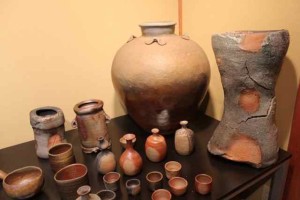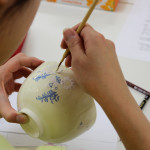
The beauty of Bizen ware, or Bizen yaki, is strongly related to its rough texture and sober color. Its beauty was discovered at the end of the 16th century as the Japanese established their world-renowned tea ceremony. When the tea ceremony began to embrace ultimate simplicity, tea masters gradually favored Bizen yaki. They preferred Bizen yaki because of the simplicity. The aesthetics of beauty in simplicity and incompleteness, which was developed during the evolution of the tea ceremony, is called sabi. (Sabi will be described further in a subsequent post.)
John, a pottery artist who was apprenticed to a renowned Japanese Bizen yaki master Michiaki Kaneshige in the early 1980s says the beauty of Bizen yaki is something you extract from the nature, not something you intentionally create. The beautiful Bizen yaki should reflect the beauty of the clay that is the gift from the earth. The Beauty of Bizen yaki is a combination of the clay’s temperature, oxygen concentration and chemical composition, but it is not contingent as often said. Each individual unit of pottery, fired in the kiln for 10 to 12 days, has an entirely unique design dependent on the environmental conditions inside the kiln. Though nowadays many artists use electric kilns, some artists including John continue to use the traditional kilns called noborigama (literally ‘climbing kiln’) and anagama (tunnel kilns). The traditional kilns best bring forth the real beauty of the Bizen yaki.
Became interested in Bizen ware? koi Travel offers you unique Japanese potteries experiences!
<Related Activities>


